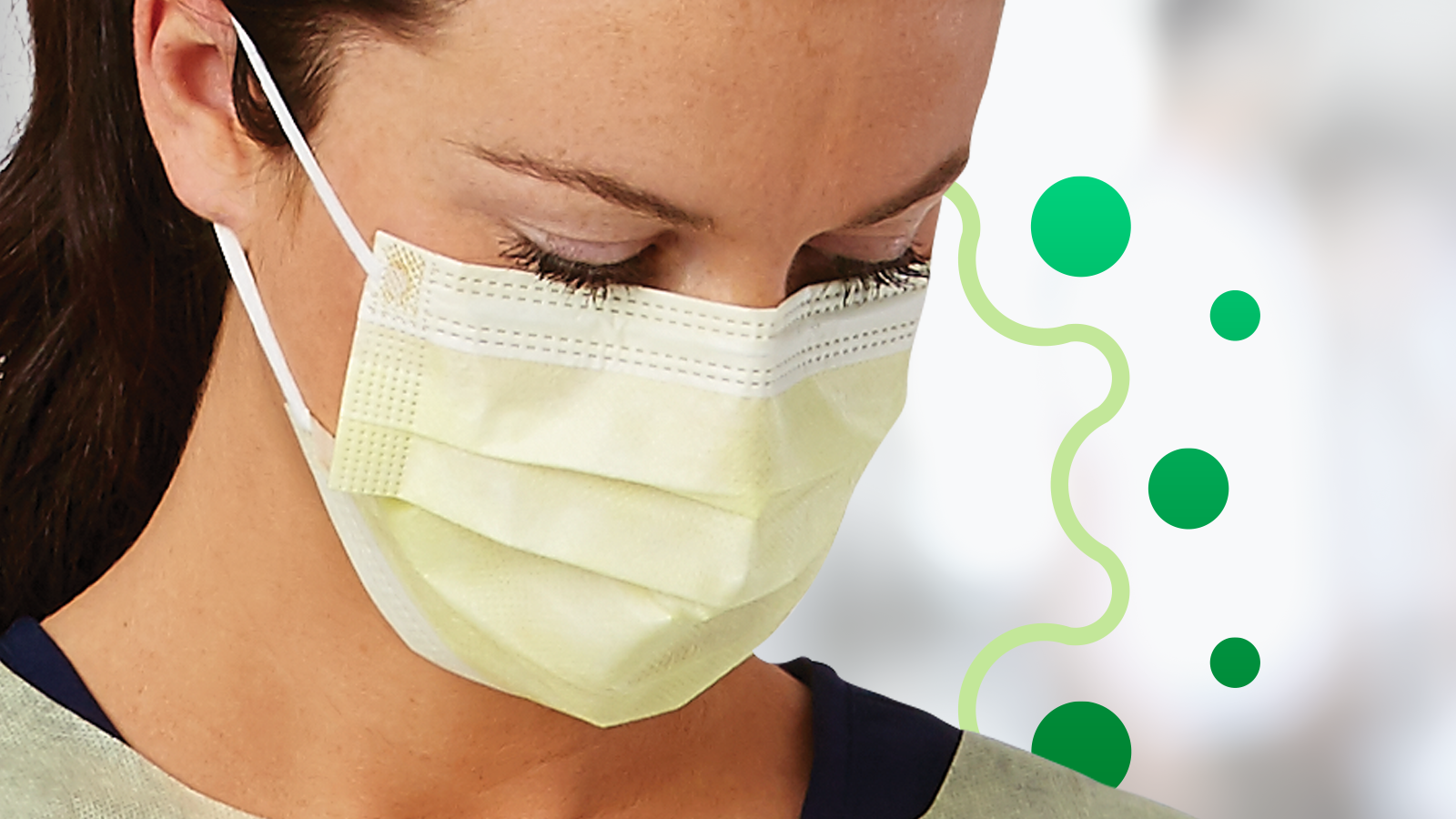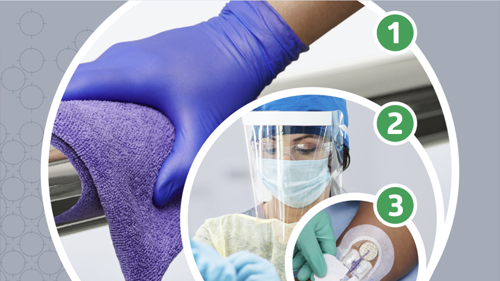ASTM mask levels: How to pick face masks in healthcare settings
Learn how to ensure the right barrier protection for every situation.

Caregivers understand the importance of wearing face masks to help prevent the spread of germs. But like other types of personal protective equipment (PPE), face masks are not all alike. That’s where ASTM International (formerly the American Society for Testing and Materials) comes in. This standards organization provides guidelines to help you ensure your team is wearing the right level of protection at all times.
ASTM F2100: Face mask levels
ASTM rates medical face masks according to three levels, with Level 1 masks providing the lowest level of barrier protection and Level 3 masks providing the highest barrier protection. The intended use for medical face masks is to protect the wearer from splashes or sprays during healthcare procedures, as well as keep large splashes and sprays from the wearer from reaching the environment.1
Here’s when to use each one:
- Level 1—For procedures producing low amounts of fluid, spray and/or aerosols
- Level 2—For procedures producing light to moderate amounts of fluid, spray and/or aerosols
- Level 3—For procedures producing moderate to heavy amounts of fluid, spray and/or aerosols2
How they’re tested
ASTM tests face masks on five performance criteria:
- PFE (particulate filtration efficiency)—Measures how well a hospital mask filters sub-micron particles. Per FDA guidance, the particle size is 0.1 microns. Microns aren’t visible to the human eye—a grain of table salt is 100 microns.
- BFE (bacterial filtration efficiency)—Evaluates the ability of a mask to keep aerosol droplets (caused by talking, coughing and sneezing) away from the wearer’s mouth and nose. It also shows the mask’s ability to prevent aerosols from the wearer’s mouth from reaching the environment. The bacteria used is Staphylococcus aureus, which is attached to liquid droplets with sizes ranging from 0.65-9 microns and above with 3 microns as the mean particle size.
- Delta P (pressure differential)—Measures the air flow resistance of the medical mask and serves as an objective measure of breathability. The Delta P is measured in units of mm H2O/cm2; the lower the value, the more breathable the mask feels.
- Fluid resistance—Evaluates the resistance of medical face masks to penetration by the impact of a small volume of synthetic blood. The test is designed to determine whether or not the mask would effectively protect a surgeon from blood spatter.1
- Flame spread—Evaluates whether the hospital mask withstands exposure to a burning flame (within a specific distance) for three seconds, a Class 1 designation. ASTM standards include testing for flame resistance because hospitals contain sources of oxygen, heat and fuel.3
In addition to the above tests, all medical face masks must be tested to an international standard (ISO 10993-5, 10) for skin sensitivity and cytotoxic tests to ensure that no materials are harmful to the wearer.
With the criteria in mind, you can see what’s required for each mask level.

Share this educational poster with your team.
Design and fit
ASTM also details the design requirements for face masks:
- Masks must stay over the mouth and nose
- Masks cannot include vents, valves or other open pathways
- Masks should fit snugly where the product contacts the wearer’s face to minimize gaps
- Portions of the mask that come in contact with skin must be made of nonirritating and nontoxic materials
- Masks should minimize the flow of air around their perimeter
- Masks must be comfortable enough for individuals to be willing to wear for long periods of time4
When it comes to fit, it’s important to remember that there is a difference between “fit” and “fitted.” For example, N95 respirators are protective devices designed to achieve close facial fit and efficient filtration of airborne particles. They must be fitted and fit-tested to ensure there are no gaps for air to escape or get in.
On the other hand, face masks should completely cover the nose and mouth, fit snugly against the sides of the face and not have any gaps, and be handled only the ear loops, cord or head straps.5
Look for the ASTM label
Finally, make sure to use masks that are ASTM rated—and labeled. Masks that simply cite “filtration rates” or “number of layers” do not follow ASTM guidelines or provide effective protection.
Key takeaway
Face masks are PPE that protect caregivers, patients/residents and visitors from infectious pathogens. Different settings and situations require different levels of protection. You and your team can feel well protected, knowing you’ve selected the right mask for the job every time.
References:
- Sprinkle, Tim. Standards for Medical Face Masks and Protective Clothing. ASTM International. Standardization News. Available at: https://sn.astm.org/?q=features/standards-medical-face-masks-and-protective-clothing-.html
- Data on file.
- Forouzandeh, Parnia; O’Dowd, Kris; and Pillai, Suresh. Face masks and respirators in the fight against the COVID-19 pandemic: An overview of the standards and testing methods. Safety Science, Volume 133, January 2021, 104995. Available at: https://www.sciencedirect.com/science/article/pii/S0925753520303921
- Zalin, Moe. Face mask guidelines: The first ever set of standards is here. NBC News, February 16, 2021. Available at: https://www.nbcnews.com/select/shopping/face-mask-standards-ncna1257753
- CDC. Types of Masks and Respirators. Accessed March 11, 2022. Available at: https://www.cdc.gov/coronavirus/2019-ncov/prevent-getting-sick/types-of-masks.html




